-
"Sensing skin" to monitor concrete infrastructure health inexpensively
In 2009, the American Society of Civil Engineers (ASCE) assigned the grade D to the overall quality of infrastructure in the United States and said that ongoing evaluation and maintenance of structures was one of five key areas necessary for improving that grade; civil engineers recently proposed a new method for the electronic, continual monitoring of structures
-
-
RAILENIUM awarded 550 million Euro boost from French government
RAILENIUM, the European Institute for Technological Research in Rail Infrastructure, has been selected by the French government as a leading investment project and has been awarded 550 million Euros in funding; the equipment and research platforms that RAILENIUM will provide will be unique in Europe; this will include a 5 km rail test loop, a tramway test track, a fatigue-simulation track, running trial facilities, and service structures
-
-
New concrete could increase life of bridges by forty years
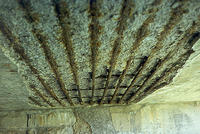
Researchers have developed a new type of concrete that could increase the lifespan of bridges by more than forty years compared to normal strength concrete; the more durable type of concrete minimizes shrinkage, a problem typically found in high-strength concrete; the new concrete is also less likely to crack, which reduces the ability for corrosive materials like chlorides from de-icing salts to seep into the bridge’s internal structure; the new concrete uses a lightweight porous type of sand
-
-
Surprise: Thomas Edison also invented the concrete house
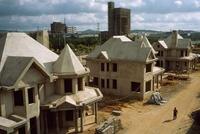
Historians say Thomas Edison invented and patented in 1917 an innovative construction system to mass produce prefabricated and seamless concrete houses; most people associate this style of architectural design and type of building technology with the European avant-garde of the early twentieth century; originally motivated by the objective of providing a cost-effective prototype for the working-class home, Edison’s 1917 experiment in mass-production was one of Modernism’s first attempts to construct a building with a single material
-
-
Making high-speed rail tracks safer
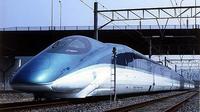
High-speed rail requires prestressed concrete railroad ties, as wooden cross ties are too flexible; for these ties to be effective, prestressing forces must be applied at a considerable distance before the rail load is applied; this is called the transfer length; to resist the heavy impacts the concrete ties utilize about twenty steel wires, each stressed to around 7,000 pounds; if the prestressed force is not properly transferred, failures can occur in the track
-
-
China admits to critical flaws at world’s largest dam
Last week, the Chinese government made a rare announcement and publicly admitted that there were critical problems at the Three Gorges dam, the world’s largest hydroelectric dam, lending support to the growing opposition to future dam projects; with the approval of Chinese Premier Wen Jiabao, the country’s second in command, last Thursday the State Council announced that the Three Gorges dam had been plagued by a series of problems “urgently in need of resolution”; problems include ecological deterioration, geological disasters, and the lingering uncertain status of more than one million people displaced by the dam; this is the first time such a high-ranking government official has publicly acknowledged the dam’s problems
-
-
More American civil engineers deployed to Japan to study damage
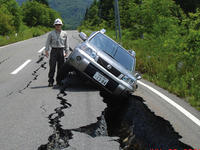
Last week the American Society of Civil Engineers (ASCE) deployed two more disaster assessment teams to Japan to study the damage wrought by the 11 March earthquake and tsunami; the two teams, the third and fourth deployed by ASCE, will tour the damaged areas which include the approximately 292 square miles inundated by the tsunami; one team will focus on examining the effects that the tsunami and earthquake had on port structures; the other team will focus their efforts on investigating the impact of the earthquake and tsunami on coastal structures like tsunami walls, breakwaters, and seawalls
-
-
U.S. mayors want greater input in federal transportation funding decisions
Last week the U.S. Conference of Mayors (USCM) released the results of a recent survey of mayors in 176 cities on local infrastructure investment; the study revealed that mayors want the federal government to spend more money on infrastructure projects in metropolitan areas rather than highway expansion projects; 96 percent of mayors believed the federal government needed to increase spending on transportation infrastructure to fix rapidly deteriorating public infrastructure; a strong majority supported raising the gas tax to provide additional funds to improve infrastructure
-
-
Rebuilding Seattle's viaduct will not result in nightmare commutes
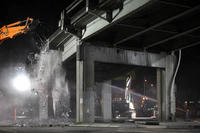
Debate about how to replace Seattle’s deteriorating waterfront highway has centered on uncertainties in the project’s price tag; drilling a deep-bore tunnel and building an underground highway is estimated to cost around $4 billion, but some worry the final price could be higher, as it was for Boston’s infamous Big Dig; University of Washington statisticians have, for the first time, explored a different subject of uncertainty, namely: how much commuters might benefit from the project
-
-
Recycled concrete saves money
Purdue University civil engineers are working with the Indiana Department of Transportation to perfect the use of recycled concrete for highway construction, a strategy that could reduce material costs by as much as 20 percent; “If you are going to pave, you may have to remove the old concrete and break it into pieces anyway, so recycling makes sense,” one of the researchers says
-
-
Secret bomb-proofing building design posted on the Web
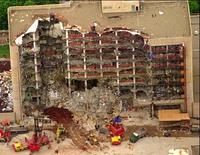
The Pentagon is building two towers in Alexandria, Virginia, to house 6,400 personnel; the Army Corps of Engineers inadvertently posted the bomb-proofing specifications for the new buildings on the Web; experts say this will allow terrorist to learn how to circumvent the building defenses; there is another problem; the documents reveal that the specifications call for the building to be designed to resist threats posed by vehicle bombs detonated outside the building’s security perimeter carrying the equivalent of 220 pounds of TNT; experts say this is not enough; Timothy McVeigh used 4,000 pounds of TNT in Oklahoma City in 1995; the 1993 attempt on the World Trade Center involved 900 pounds; the attack on the Marine barracks in Lebanon in 1983 involved 12,000 pounds of TNT
-
-
Lessons from Japan's tsunami could dramatically shift building codes
American tsunami experts and engineers are scouring the devastation wrought by the 11 March earthquake and tsunami to analyze how structures fared during the natural disasters and what lessons can be applied to U.S. building codes; experts are particularly concerned about the toppling of a reinforced-concrete building as that has been the baseline for tsunami construction and evacuation procedures; experts were stunned by the devastation and are concerned about America’s West Coast which is significantly less prepared than Japan for an earthquake or tsunami; in particular experts are concerned about Oregon which shares many geological similarities to Japan’s northeastern coast; researchers hope to learn valuable lessons that will minimize the destruction from a similar event in the United States
-
-
Shoring up U.K. infrastructure essential to country's welfare
The United Kingdom suffers from some of the most congested infrastructure in the developed world and a failure to invest in these will have serious impacts upon the country’s long-term economic future; improvements to transport, energy, and ICT infrastructure could increase GDP by an additional 0.7 percent
-
-
Maui proposes $44 million for water infrastructure projects
Alan Arakawa, the mayor of Maui County, has proposed spending nearly $44 million on water infrastructure projects in 2012, a sharp increase of $20 million from current spending levels;the budget increases would go to the Department of Water Supply which has requested funding to undertake several critical infrastructure investments; the department would allocate $10 million to rehabilitate the Waikamoi flume, which is a critical source of water for Upcountry residents; the department also wants to spend $200,000 to improve water pipelines in Paia-Haiuku and $2.3 million for Wailuku-Kahului water source improvements; council members have balked at the large budget increases needed to pay for these projects
-
-
Massachusetts to spend record $1.2 billion on road and bridge projects
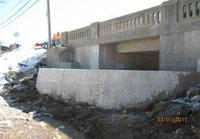
This year Massachusetts is on track to spend a record $1.2 billion on state road and bridge projects, more than double what it spent in 2007; the state’s latest project is the repair of a structurally deficient bridge over Lake Lashaway and the reconstruction of a dam spillway near the bridge in the town of East Brookfield; the reconstruction of the bridge comes as part of a broader effort by Governor Deval Patrick to invest record amounts of funding in critical infrastructure repairs; last year, the Governor spent nearly a billion dollars on 400 road and bridge projects across the state; a recent study found that one in nine bridges in Massachusetts was in need of repair
-
- All
- Regional
- Water
- Biometrics
- Borders/Immig
- Business
- Cybersecurity
- Detection
- Disasters
- Government
- Infrastructure
- International
- Public health
- Public Safety
- Communication interoperabillity
- Emergency services
- Emergency medical services
- Fire
- First response
- IEDs
- Law Enforcement
- Law Enforcement Technology
- Military technology
- Nonlethal weapons
- Nuclear weapons
- Personal protection equipment
- Police
- Notification /alert systems
- Situational awareness
- Weapons systems
- Sci-Tech
- Sector Reports
- Surveillance
- Transportation
Advertising & Marketing: advertise@newswirepubs.com
Editorial: editor@newswirepubs.com
General: info@newswirepubs.com
2010-2011 © News Wire Publications, LLC News Wire Publications, LLC
220 Old Country Road | Suite 200 | Mineola | New York | 11501
Permissions and Policies
Editorial: editor@newswirepubs.com
General: info@newswirepubs.com
2010-2011 © News Wire Publications, LLC News Wire Publications, LLC
220 Old Country Road | Suite 200 | Mineola | New York | 11501
Permissions and Policies
